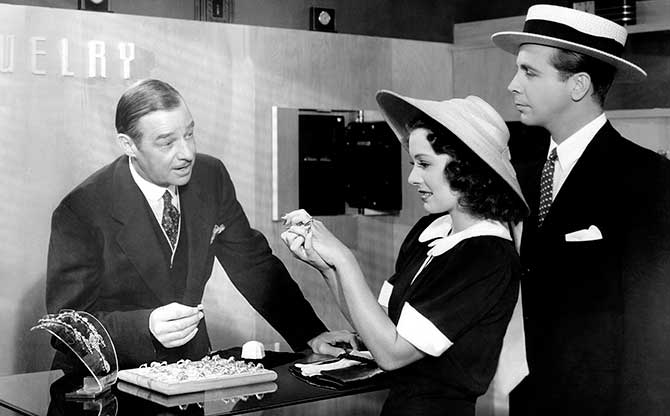
Today, the best service experience anywhere becomes the expectation everywhere. Providing a superior customer experience is no longer optional; it’s obligatory.
When consumers can buy any product at any time—from a multitude of competing retailers—it’s the buying experience that separates the leaders from the rest of the retail pack.
The ability to earn and maintain customer loyalty through consistency, transparency, personality, and overdelivery (on everything from fulfillment times to customization options) is what drives the bottom line in modern retailing. It’s why Amazon is the category-gobbling retail juggernaut it is today.
But while most retailers realize the importance of delighting customers, many don’t understand that practicing traditional customer service—the version that deals in fake smiles, suits and ties, Champagne, and chronic upselling—isn’t the way to do it.
There’s a reason the phrase customer service sends chills down many consumers’ spines: The term has become synonymous with impersonal corporate call centers, slick salesmanship, and mentally checked-out sales associates.
For these reasons (and likely many more), the phrase has fallen out of favor with a bevy of young brands. In a bid to reframe the act of providing flawless service as an artful exercise—instead of a set of servile actions devoid of emotion—these brands have replaced the expression with the more holistic customer experience.
“We always considered it customer experience, not customer service,” says Vanessa Stofenmacher, founder of maverick jewelry startup brand Vrai & Oro. “When I think of customer service, I think that it can be sterile and unhelpful and frustrating,” she says. “We wanted one of our key focus points to be about offering experience rather than service.”
And the evolution is about much more than semantics. “Customer service has been this stale and outdated part of business that hasn’t been really addressed in the last few decades,” Stofenmacher says. “It took something like going online and taking away that touch-and-feel and face time to [push it] forward.”
Jacques Panis, president of Shinola, also uses the phrase customer experience when talking about the many ways in which the watch and accessories brand strives to exceed its customers’ service expectations. “We work hard to ensure that our values are clear to every customer who interacts with our brand.”
How does customer experience diverge from that of good ol’ customer service? To find out, we looked to a few of the industry’s pacesetting brands.

Stiff Smiles vs. Authentic Friendliness
Did you know that ancient Rome had a shopping mall? It’s true. Trajan’s Forum (Rome’s other forum) was a sprawling marketplace that spanned multiple buildings and four levels. Was customer service, as we know it, born of some sheepherder’s desire to lighten his load of wool?
However the idea took hold, the concept of pleasing customers to ensure they buy is as old as retail itself. But striving to imbue the scenario with genuine friendliness is still a relatively new idea.
For decades, tight smiles and cold efficiency represented the high bar in retail. There was even a time in the ’80s when luxury brands used snootiness as a tactic. Remember those haughty Rodeo Drive saleswomen shunning Julia Roberts’ character in Pretty Woman? Snobbishness was synonymous with chicness.
No longer. Smart modern brands know they have to train their employees to be warm, easygoing, and empathetic to connect with modern consumers. And these businesses are willing to invest in that training.
“A lot of customer service roles in companies are treated as entry-level,” says Stofenmacher. “But for us it’s not about getting the cheapest worker we can find; it’s about finding the right people who can really have a conversation with customers. We look for people who are problem solvers and who can be patient.”
Phillip N. Bosen, founder of jewelry retail consultancy Bosen Associates, says small retailers are typically very friendly with customers when they walk through their front door but often don’t extend that warmth through the overall customer experience. “They don’t do enough to really ingratiate themselves to the client base they have,” he says. “They need to be calling clients, giving gifts when [appropriate], paying attention to charitable giving that is actually meaningful to their clients. A lot of the modern service we’re seeing crosses over into marketing, which is important to understand.”
At Shinola’s brick-and-mortar locations and on its website, “we focus a lot of our attention on proper training and keeping our employees happy, first and foremost,” Panis says. “It keeps them engaged and willing to work hard—and I think our customers can feel that.”
Push vs. Pull
While some say there’s a place for commission-based sales in the jewelry and watch industries, forward-thinking brands and retailers are focusing on creating fresh alternatives. These new work environments are less competitive and more fun, and liberate employees from high-pressure practices like upselling, which studies show is unpopular with millennial consumers.
At Vrai & Oro, “we never try to upsell,” Stofenmacher says. “If someone wants a 1 carat diamond and we don’t have it, I wouldn’t push a 1.25 carat. I’d rather say, ‘I’ll let you know when we have something in stock.’ Trust is the most important thing you can earn from a customer. If someone feels they’ve been pushed to buy a little more in that moment, they’re not going to trust you.”
Rigid Rules vs. Flexibility
Amazon developed—and made ubiquitous—many of today’s most popular perks, such as fast and free shipping and no-questions-asked returns and exchanges. These consumer conveniences have now become consumer expectations, and when brands haven’t adopted them (see: J.Crew), they’ve quickly lost market share.
“There is that expectation of free shipping and returns now, even if you’re a small business with just two or three people running around,” says Chelsey Bartrum, cofounder of startup fine jewelry brand Starling. “You kind of have to figure it out.”
For retailers who balk at the prospect of shouldering the shipping burden, jewelry retail consultant Bosen notes that “you definitely have to work the shipping cost into the price of your merchandise now.”
Adds Stofenmacher: “It’s becoming more and more obvious that any e-commerce company needs to be more flexible with return and other policies.” For Vrai & Oro, that’s meant “solving problems one by one,” she says. “We’ve really had to throw out the rule book.”
Delivering vs. Delighting
Customer experience, as a phrase, is also a nod to a growing reality: Buzzy brands are instituting practices that, in the past, would have qualified as magnificent customer service.
Shinola stores are veritable treasure chests of trendy shopper perks, ranging from free monogramming on all journals and leather goods to gratis Shinola Cola (the house beverage) and dog treats.
At Starling, a handwritten note accompanies every purchase. “We’re offering that easy, online service, but we want to deliver an experience that’s meaningful as well,” Bartrum says. “Including a card makes the purchase a little more of an experience.”
Bosen says when it comes to delighting customers, he’s a fan of simple but effective tactics: He advises his fine jewelry retail clients who frequently work with men to offer guys an ice-cold, local craft beer (a modern take on the clichéd glass of Champagne). “Wouldn’t you offer someone in your home a beverage?” asks the consultant, adding that he knows a few retailers who “keep a couple of frosty mugs in their freezer. I’ve never seen this abused—no one’s going to get buzzed off one beer and ruin their financial future,” Bosen says. “But it’s a great way to show your customers that you care about their comfort.”
(Black and white photo: Everett Collection; color photo: the Good Brigade/Offset)